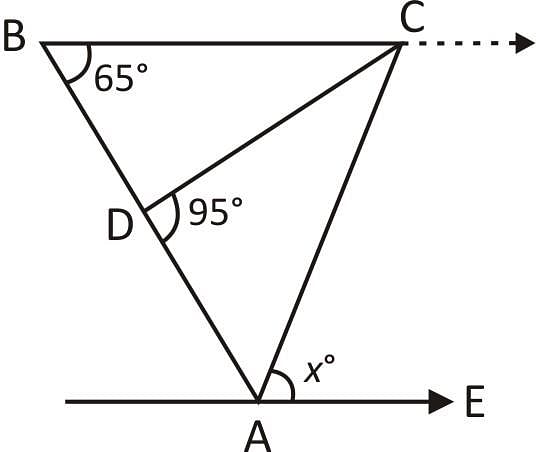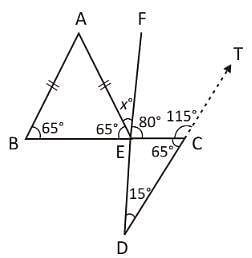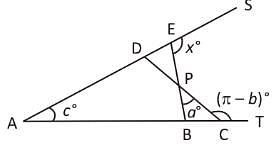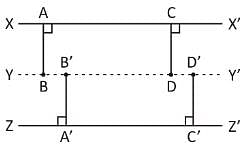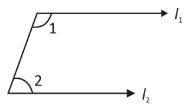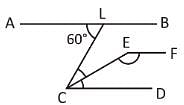Test: Lines & Angles - 1 - ACT MCQ
10 Questions MCQ Test Mathematics for ACT - Test: Lines & Angles - 1
In the figure given below, ABC is a triangle. BC is parallel to AE. If BC = AC, then what is the value of ∠CAE?
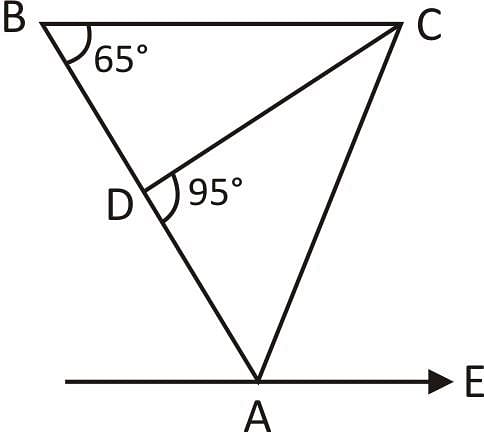

In the figure given below, AB is parallel to CD. ∠ABC = 65°, ∠CDE = 15° and AB = AE. What is the value of ∠AEF?


The angles x°, a°, c° and (π – b)° are indicated in the figure given below. Which one of the following is correct?
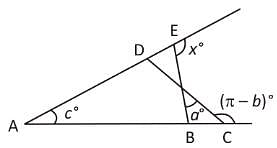

Consider the following statements
I. The locus of points which are equidistant from two parallel lines is a line parallel to both of them and drawn mid way between them.
II. The perpendicular distance of any point on this locus line from two original parallel lines are equal. Further, no point outside this locus line has this property.
Which of the above statements is/are correct?
A wheel makes 12 revolutions per min. The angle in radian described by a spoke of the wheel in 1 s is:
If one arm of an angle is respectively parallel to the arm of another angle formed with a common line between them, then the two angles are
In a Δ ABC, (1 / 2) ∠A + (1 / 3) ∠C + (1 / 2) ∠B = 80°, then what is the value of ∠C?
In the given figure AB || CD, ∠ALC = 60° and EC is the bisector of ∠LCD. If EF || AB then the value of ∠CEF is
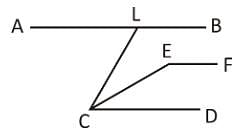
In the given figure lines AP and OQ intersect at G. If ∠AGO + ∠PGF = 70° and ∠PGQ = 40°. Find the angle value of ∠PGF.
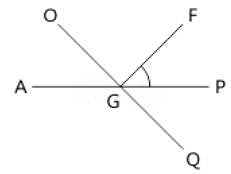
|
144 videos|100 docs|61 tests
|


